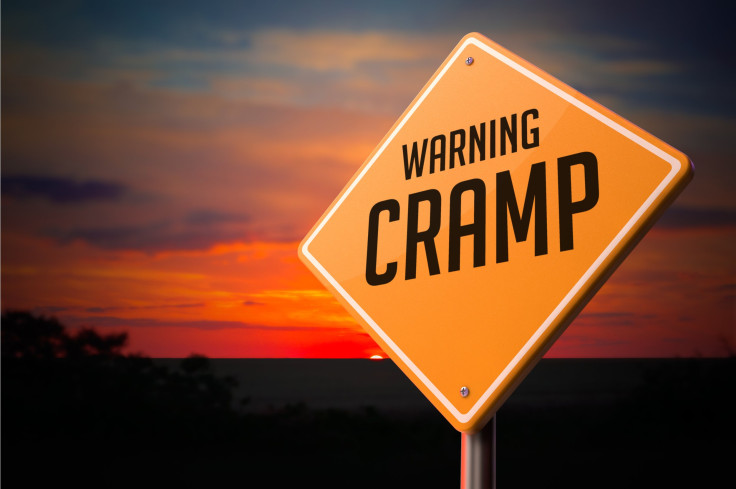Nighttime Leg Cramps Are Twice As Common In The Summer; 4 Home Remedies For Charlie Horses

A nighttime Charlie Horse rides deep into the calf muscles and causes painful leg spasms that are enough to wake you up in the middle of your sleep. Canadian researchers studied the peaks and falls of a commonly prescribed leg cramp treatment known as quinine and published their findings in the Canadian Medical Association Journal. The newly traced trends indicate nocturnal leg cramps spike twice as high in the summertime based on how many prescriptions are filled.
"Although there are anecdotal reports of pregnancy-associated rest cramps being worse in summer, these findings establish the phenomenon of seasonality in rest cramps in the general population," the study’s coauthor Dr. Scott Garrison, from the University of Alberta, Edmonton, said in a press release. It didn’t matter if the hot weather took place during July in the British Columbia, or in January for Australians when their summer peaks — quinine dosages were connected to the temperature.
Researchers studied new quinine prescriptions for 31,339 adults who were 50 years of age between 2001 and 2007. They used Google trends to monitor the amount of searches there were during a particular time of year, and the summertime peak only occurred for quinine taken specifically for leg cramps. In order to be thorough, researchers also checked other ailments and found there was no season change for back pain, kidney stones, migraines, acne, or pain attacks.
But what is quinine, anyway? It comes from the bark of one of the most famous rainforest plants, the Cinchona, and was originally used to treat malaria nearly 300 years ago in Peru during the 17th century. However, in September 2012, the Food and Drug Administration announced there were serious risks associated with treating or preventing nocturnal leg cramps with quinine. When taken in large amounts, it can easily turn fatal. If you like gin and tonic, be wary because roughly 20 milligrams of quinine is floating in your tonic water, whereas a dose for leg cramps would be upward of 200 to 300mg.
It’s exactly why Dr. David Hogan from the University of Calgary wrote in a related commentary, tracking the trends may not be strong enough to link nightly leg cramps to hot weather in the summertime. In the study itself, the authors suggest quinine should only be used for four weeks at a time because of the dangers, which would offset the reliability of prescription trends. If countries around the world found the dangers high enough, researchers would be forced to take a closer look into what exactly causes these leg cramps — is it really the heat?
“In countries where quinine is still in widespread use as prophylaxis for nocturnal leg cramps despite safety warnings [for example, Canada and the United Kingdom], physicians may choose to counsel patients to take a 'quinine holiday' during the six colder months of the year,” the researchers wrote.
4 Natural Remedies to Alleviate Leg Cramps Year Round:
- Chug water before bed.
Water is a natural cramp reliever. Mixing tonic water with water may also help offset cramps. It would be at a low enough dosage where it could alleviate the pain, hydrate the muscles, and without the looming threat of an overdose. - Bar of soap in bed.
It may sound strange, but many leg cramp sufferers have suggested putting a bar of soap in between the mattress and the bottom sheet will reduce leg cramps throughout the night. Many medical authorities even swear by it, because of a possible combination of emissions from the soap, according to Snopes. They also theorize it could be because the slight pressure the soap provides by pushing it the muscle gradual at random tossing and turning intervals in the night. - Stretch it out.
A quick three-minute workout before bed can help unexpected leg cramps in the middle of the night. Doing a standing calf stretch with one leg in front of the other, knee bent, and back leg extended, the muscle should experience a relieving pull. If the problem occurs higher up on the leg, a hamstring stretch should do the trick. Place both feet together and do a standing forward bend at the hips, and hold for a 20-second count. - Increase potassium and magnesium intake.
A simple imbalance may be causing a vitamin deficiency in the body, making it difficult for the heart’s system to push enough blood down into the legs. Magnesium regulates muscle and nerve function, blood sugar levels, and blood pressure, while potassium serves as an important electrolyte with similar roles in addition to water regulation. Bananas are great, healthy food sources of potassium.
Source: Garrison SR, Dormuth CR, Morrow RL, Carney GA, and Khan KM. Seasonal effects on the occurrence of nocturnal leg cramps. Canadian Medical Association Journal. 2015.
Published by Medicaldaily.com



























